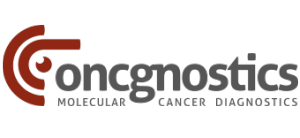Ovarian cancer: The silent danger
Every year, about 7,300 women in Germany are diagnosed with ovarian cancer (ovarian carcinoma), and more than 5,000 die of the consequences. This means that one in 72 women will be diagnosed with ovarian cancer at some point in their lives. In those affected, cells on one or both ovaries change malignantly and begin to grow uncontrollably. Since there is a lot of space around the ovaries where the cancer that develops in this way can spread, many women only notice the disease late. With nasty consequences.
Who is affected?
The risk of an ovarian tumour increases with age. Ovarian cancer occurs more frequently after the age of 50. On average, those affected are 69 years old when they are diagnosed. In addition to higher age, obesity is also an ovarian cancer risk factor.
In addition, the disease can be hereditary and occur more frequently in a family (so-called familial ovarian cancer). Special attention is therefore required if there are known histories of ovarian or breast cancer in the direct family.
Other causes for ovarian cancer may include hormone replacement therapy during the menopause. Women who undergo such treatment are more likely to develop ovarian cancer. However, the risk decreases again if the hormones were taken at least ten years ago.
Women who have had children are also less likely to get ovarian cancer. This also applies to those who took the contraceptive pill or breastfed at least one child during their childbearing years.
Symptoms of Ovarian cancer is often noticed late
Because of their location in the abdominal cavity, ovarian tumours have plenty of room to grow unnoticed. This is why those affected usually have no complaints for a long time.
Suspicious circumstances can be
- Bleeding outside the menstrual cycle or after the menopause.
- A larger abdominal girth without gaining weight
- Bloating, flatulence or abdominal pain, as well as unusual digestive problems that are accompanied by a worsened general condition.
- Urinating more frequently than normal
If you have any of these symptoms and they persist over a long period of time, you should seek medical advice.
Suspected ovarian cancer: examination and treatment
If a tumour is suspected on the ovaries, they are palpated in a gynaecological examination. In addition, an ultrasound examination through the vagina is often offered. The hit rate here is critical, as tumours cannot be distinguished from other cysts in the ultrasound. If a tumour is nevertheless discovered in the ovaries, its stage determines the further treatment.
According to the FIGO classification (International Federation of Gynecology and Obstetrics), ovarian cancer is divided into four stages:
- I: The tumour affects one or both ovaries.
- II: The cancer spreads into the pelvic cavity.
- III: Outside the pelvis, cancer cells are found in the abdominal cavity or lymph nodes.
- IV: Tumour cells have spread to other parts of the body outside the abdominal cavity.
Because of the unclear symptoms of ovarian cancer, the disease is often not recognised until stage III or IV. If possible, the treating doctors remove the ovarian carcinoma completely in an operation. This is almost always followed by chemotherapy.
Ovarian cancer diagnosis: good chances of cure if detected at early stage
If diagnosed at an early stage, the chances of cure in the ovarian cancer treatment are relatively good. The relative survival rates after five years are 89 percent in stage I and 77 percent in stage II. The more advanced the tumour, the worse the chances of cure. If the tumour recurs despite surgery and chemotherapy, the disease can no longer be cured, but only treated palliatively.
Good post-treatment care is therefore very important. The actual treatment is followed by close monitoring with regular examinations. Psycho-oncological care or rehabilitation measures can also be useful.
Research project on early detection
At present, there is no special screening test for the early detection of ovarian cancer. In a cooperation with the gynaecological clinic of the University Hospital in Jena, we are researching to find suitable tumour markers for ovarian cancer for improved diagnostics. The aim is to detect the disease earlier and thus increase the chances of cure.
Ask a doctor you trust.
Literature sources
National Health Service Great Britain (2020): Cancer of the ovaries. www.nhs.uk/conditions/ovarian-cancer
American Cancer Society: Ovarian cancer survival statistics. www.cancerresearchuk.org/cancer-statistics
Center for Disease Control: Ovarian Cancer Statistics. www.cdc.gov/cancer/ovarian/statistics
Zentrum für Krebsregisterdaten (2017): Eierstockkrebs (Ovarialkarzinom). www.krebsdaten.de/Eierstockkrebs
Universitätsklinikum Tübingen: Eierstockkrebs – der stille Feind. www.medizin.uni-tuebingen.de/expertentipps/krebsvorsorge/eierstockkrebs
Deutsches Krebsforschungszentrum (2020): Eierstockkrebs (Ovarialkarzinom). www.krebsinformationsdienst.de
Deutsche Krebsgesellschaft (2018): Eierstockkrebs: Basis-Infos für Patienten und Angehörige. www.krebsgesellschaft.de

 Shutterstock
Shutterstock